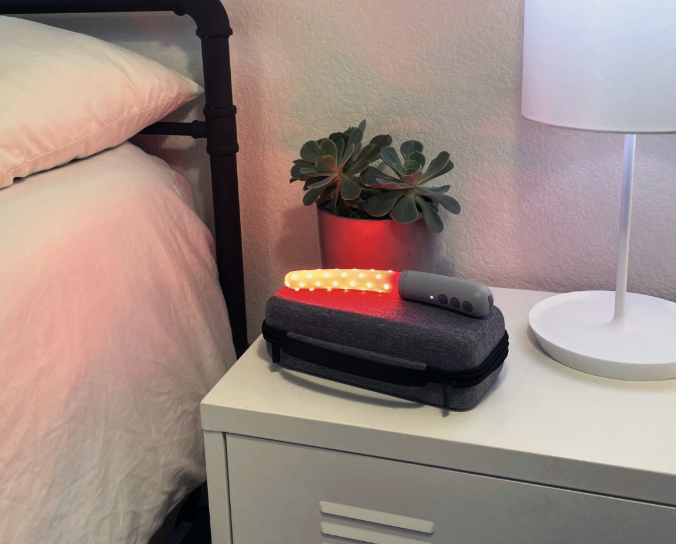Clomid or Red Light Therapy? More Hope on the Horizon
If you’re on the journey to conceive, you probably already know that Clomid is one of the most prescribed fertility drugs, with an estimated 1.6 million women in the U.S. using it each year. But what if there was another option that could potentially boost your chances of success—without the side effects? Enter: red and near-infrared laser therapy!
What the Research Shows
Recent studies are exploring how near-infrared light (810 nm) can stimulate follicle production, and the results are amazing. While this study was conducted on animals, it’s an important step forward in exploring new, non-invasive fertility treatments for women. In a comparison between Clomid and NIR, the 810 nm laser boosted follicle production by up to 2.5 times more than Clomid alone. This means that if you’re struggling to respond to Clomid, or want to avoid its side effects, laser therapy might be worth exploring. (For me I had mood swings, sore breasts and vaginal dryness - hardly a recipe for any kind of spontaneous baby-making sessions ;)
Why Does This Matter?
This non-invasive treatment boosts mitochondrial function, aiding your ovaries in producing more follicles naturally. It’s like recharging your cells, leading to increased follicle development, which is critical if you're trying to conceive, especially for those dealing with PCOS or unexplained infertility.
While Clomid forces your body to ovulate, laser therapy offers a gentle, supportive alternative that works with your body’s natural processes. If you’re taking Clomid but not seeing the results you hoped for—or experiencing side effects—adding or switching to NIR could enhance your chances of success.
Clomid (Clomiphene Citrate)
The Laser Therapy Protocol
Here’s the technical breakdown of how the therapy worked:
Laser type: Diode laser
Wavelength: 810 nm (near-infrared) and 630 nm (red light)
Power density: 268.35 mw/cm² for NIR; 41.77 mw/cm² for red light
Energy density: 5 J/cm² per session
Session frequency: Laser was applied on the first 2 days of the estrous cycle, repeated every 6 days for 48 days (the equivalent for humans would be based on your ovulatory cycle).
Duration per session: 28 seconds for near-infrared and 142 seconds for red light on targeted areas over the ovaries (keep in mind these are rats - not adult humans).
Only the Fringe vaginal wand includes red and NIR to get red light closer to the ovaries than any other red light device and with an appropriate therapeutic dose.
Side Effect Free
What makes this even more exciting? The therapy is non-invasive, side-effect-free, and has shown promise in improving ovarian function. For women who have tried Clomid without success, red light therapy could be the missing piece of the puzzle.
So if you’re ready to explore innovative options in your fertility journey, red light laser therapy might just be the gentle nudge your body needs. It’s exciting that there are so many hopeful, science-backed alternatives on the horizon utilizing red light and laser.
Tracy
Note:
(There’s quite a number of animal studies reporting benefits of PBM on ovarian activity in different mammals including hamsters which makes this therapy even more fascinating).
https://pubmed.ncbi.nlm.nih.gov/30897401/
(The number of ovarian follicles and corpus luteum were increased, and the number of ovarian cysts was decreased by PBM stimulation. Thus, reproductive and endocrine characteristics were modulated by PBM).
https://pubmed.ncbi.nlm.nih.gov/11799979/


